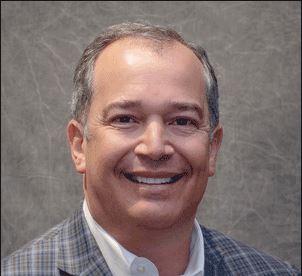Public safety needs a better way to triage emergency calls
The overarching goal of the public-safety community is to ensure that 911 callers receive the most appropriate emergency response as quickly as possible. Lives often are on the line in an emergency, and every second matters.
Achieving a balance between sending the optimal response to an emergency and having it arrive as fast as possible is tricky. In fact, it is analogous to walking a tightrope. To achieve the former, many emergency communications centers (ECCs) rely on standard protocols developed for each type of emergency call that they receive, typically law enforcement, fire/rescue and emergency medical.
These protocols enable 911 telecommunicators to systematically query callers to determine the exact nature of their emergency. The answers provided enable telecommunicators to dispatch the appropriate response—both personnel and equipment—and to provide critical prearrival instructions that often mean the difference between life and death.
But it takes time to work through these protocols—occasionally, too much time. Though it doesn’t happen often, when response is delayed, the person experiencing the emergency can be impacted severely. This creates quite a conundrum for the public-safety community. If telecommunicators move too fast through the protocols, they might send the wrong response. If they move too slowly through them, the response might not arrive in time. Both are bad outcomes for the person who needs help.
This challenge is exacerbated by the enormous volume of 911 calls that ECCs handle—about 240 million annually nationwide. This figure is expected to rise significantly during the next few years, driven by sensor-initiated calls generated by smartphones, alarm systems and Internet of Things (IoT) devices (e.g., wearable medical monitors). As call volumes rise, telecommunicators who already are under-staffed, under-trained, and under siege in many ECCs will be subject to even greater pressures as they work to send the correct response in the shortest amount of time.
What the 911 and emergency-response community needs is a better way to triage emergency calls.
A step in that direction was made by the District of Columbia a few years ago. The district launched the “Right Care, Right Now” initiative to address the large number of low-acuity medical calls its ECC receives. Such non-life-threatening medical calls—e.g., sprains, flu-like symptoms, a minor cut requiring stitches, stomach pains—do not qualify as basic life support (BLS) or advanced life support (ALS) incidents. Nevertheless, ECCs from coast to coast receive a lot of them. And when they do, they typically are obligated to dispatch an ambulance/emergency medical technician (EMT)/paramedic to the incident to assess the patient’s condition and, in many cases, transport the patient to an emergency room (ER). The former is required, regardless of the severity of the incident.
The district’s approach centers on a nurse triage line managed by a third-party provider of healthcare services throughout the Washington metropolitan area. When a 911 call is placed, it first is fielded by a 911 telecommunicator. If it is a medical call, the telecommunicator—using prescribed protocols—determines whether the call should be transferred to a registered nurse for triage. If so, the nurse will ask the caller another series of protocol-based questions.
The nurse determines the appropriate medical care for the caller. In some instances, the nurse will work with the patient to schedule a visit with his/her primary-care physician and arrange transport via taxi, ride-sharing service, or family member. If it is determined that the caller should be given immediate care, the call will be transferred back to 911, and a telecommunicator will dispatch an ambulance and any other appropriate response.
While 911 telecommunicators still are involved in the calls, the program is designed to relieve the operational and financial burdens—ambulance responses are expensive— on the emergency-response system in several ways:
- Transferring low-acuity calls to the nurse frees 911 telecommunicators to handle other calls, reducing response times;
- Ambulances, which often are overburdened, will be less so because unnecessary runs will be reduced significantly, if not eliminated altogether. Ambulances also will be better maintained, because they will not be on the street constantly;
- Paramedics and EMTs will be more available to handle life-threatening emergencies; and
- Emergency rooms won’t be as overrun as they are today, which should enable them to enhance the level of care provided to BLS and ALS patients
Here’s another, more recent, example of 911 call triage. The Partnership for Priority Verified Alarm Response (PPVAR) is working with the alarm industry to reduce the number of unverified alarms—in particular false alarms.
According to the Security Industry Alarm Coalition, alarm companies generate roughly 23 million notifications each year—and nearly 100% of them are unverified. This represents about 10% of the total volume of 911 calls made—and some communities report that alarms account for as much as 20% of all calls to 911. This is a big problem.
PPVAR’s concept involves an algorithm-driven methodology that will apply a score to any given alarm incident. Alarm companies will use the score to decide whether to contact an appropriate emergency response agency. If it does, the agency will use the score to triage the incident and then determine the appropriate response.
The contact between the alarm company and the agency is expected to leverage the ASAP-to-PSAP (Automated Secure Alarm Protocol/Public Safety Answering Point) standard, which enables machine-to-machine transactions. Doing so would reduce the number of voice calls that tie up phone lines and require interaction with a 911 telecommunicator. This is significant, because today every alarm notification generates three to five 911 calls from the alarm company—the original activation, with multiple follow-up calls.
Every ECC could benefit from improved 911 call triage, to ease the strain on telecommunicators, enhance emergency response outcomes and—most importantly—to save more lives.
Darrin Reilly is president and COO of Mission Critical Partners. Headquartered in State College, Pennsylvania, MCP provides consulting services and solutions that support mission-critical communications. He can be emailed at [email protected].


















